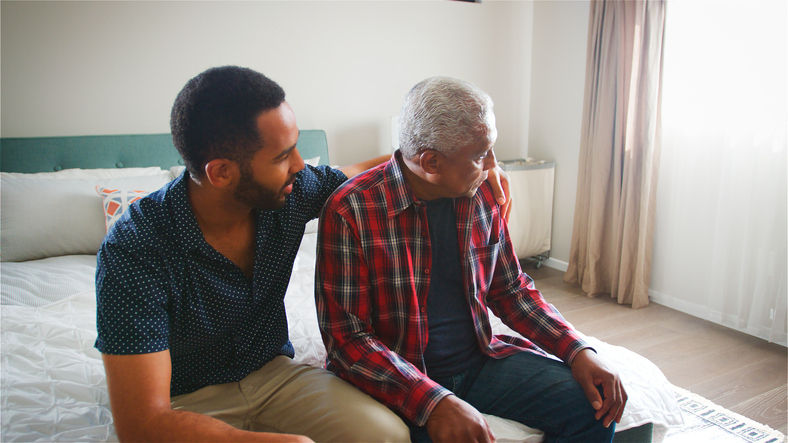The Hidden Cost of COVID – Part 2
- Elder Care Law Blogger
- Dec 21, 2020
- 4 min read
Updated: Oct 6, 2022

As COVID-19 cases soared among nursing home residents and staff in early spring, administrators were forced to react swiftly. When facilities announced lockdown measures in March, they did so without warning, which sent residents and families into panic mode. “We started getting calls from our clients’ family members on March 11,” said Debra King, one of the elder care coordinators at Takacs McGinnis. “They were saying things like, “They won’t let me see my momma. They locked it down. They didn’t tell us this was happening. Can they do that? I need to get in.’ It was mayhem.”
It’s now late November, and some families haven’t seen their loved ones for more than six months. “The family members of our clients were worried in February and they’re even more worried now,” said Pati Bedwell, also an elder care coordinator at Takacs McGinnis. “These are people who visited their loved ones every day. They were the ones helping to feed their mommas. They want to trust that the facility is doing what they need to do to take care of their loved ones, but they can’t be sure that someone’s sitting there and saying, ‘Come on momma, one more bite. Come on momma, let me get you some sweet potatoes instead of the pears that you don’t like.’ Nursing homes aren’t getting those extra hands from the family members.”
The COVID-related lockdowns have laid bare an uncomfortable reality that you won’t find advertised in a facility’s promotional brochure: nursing homes are perpetually short staffed. “It’s been that way for a long, long time but no one talks about it,” said Debra. “You have an industry that doesn’t have enough hands on deck in normal times. Add a pandemic to the equation, and then remove all the family members who were visiting regularly to provide care to their loved ones. It creates a nightmare situation.”
With family members no longer allowed to visit and nursing home workers felled by the virus, many facilities have had difficulty meeting anything more than residents’ basic needs. Family members, frustrated by the inability to see and care for their loved ones, found (and still find) themselves on the outside looking in. “A few of my clients said they felt envious of the nursing home employees and the access those workers had to their loved ones,” Pati noted. “They could see the irony in the situation. These nursing home workers were going out in the community after work, yet the families weren’t allowed in. One of my clients said, ‘If I could get in to see mom, I would keep myself as clean as I could. I’m more invested in keeping clean than these staff people are.’”
Later in the summer, as social distancing and other restrictions eased, the Centers for Medicare and Medicaid Services (CMS) issued new guidelines that left it up to facility administrators to determine who was allowed to visit. Within those guidelines, each facility has the freedom to interpret those guidelines and implement them based on the needs of their residents and the community at large.
Different nursing homes have different rules, and many family caregivers are frustrated by the inconsistency. “One of our clients who hasn’t seen her relative since February called the nursing home’s corporate headquarters, got the long-term care ombudsman involved, and even called the governor of Tennessee to try to get visitation rights,” said Debra. The bottom line is that CMS issues these guidelines for visitation, but they allow facilities to implement them however they want to. Though facilities aren’t permitted to have guidelines that are less restrictive than the CMS directive, they can be more restrictive. And that’s what many facilities have done.”
As we move into the winter months, odds are good that the restrictions will only tighten. “All it takes is one employee to come in with a temperature and they lock the whole place down,” Pati said. “Even the residents that are going out for doctors’ visits or trips to the emergency room are finding themselves facing a two-week quarantine in their rooms after they return. Some facilities have gone so far as to create a quarantine hall to keep potentially infected people separate from others.”
What does the future have in store for nursing homes? Debra and Pati agree that things don’t look so good. “We have been talking about that since month one,” Pati said. “They’ve got to figure out how to make this work because if we have another year of COVID isolation, it’s not going to be good. They’ve got to figure out how to allow these families in. Clients tell me they would rather love on their family and risk getting COVID than to be isolated like this.”
Though many are quick to blame nursing homes for the problems, the situation is more complicated than that. “Nursing homes are just trying to follow the rules and protect their residents,” Debra admitted. “When you look at the numbers, they’ve been able to do that. The number of COVID-19-related nursing home deaths isn’t nearly as high now as it was back in March and April. But when you look beyond the numbers to the impact of those actions on the lives of residents, things don’t look so good.”
To view the latest CMS statistics on the impact of COVID-19 on nursing homes, visit https://data.cms.gov/stories/s/COVID-19-Nursing-Home-Data/bkwz-xpvg/.







Comments